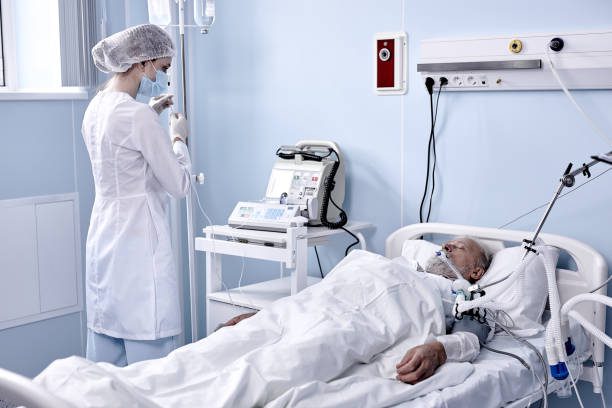
In laser cataract surgery, a cloudy lens is removed using a laser by an eye surgeon, and the clouded lens is replaced with an artificial prescription lens to restore vision. Compared to typical knife cataract surgery, this approach yields greater recovery and fewer problems.
The technique is safe and effective, yet it’s not without some hazards. Nevertheless, compared to the conventional approach, laser cataract surgery is more expensive and is not usually covered by health insurance.
Laser Cataract Surgery
Being an outpatient operation, laser cataract surgery allows you to return home the same day.
Among the steps in the process are:
Incision:
Using integrated optical coherence tomography (OCT) imaging, which generates a high-resolution, enlarged image of your eye, a femtosecond laser is utilized to form an incision in your eye.
Cataract fragmentation:
Before employing ultrasound vibration to “soften” the cataract, a femtosecond laser can be utilized to split it up into small fragments. This helps to lessen the amount of ultrasonic vibration required for thick cataracts.
Phacoemulsification:
Using a high-speed ultrasound vibration technique called phacoemulsification, the cataract is broken up into small pieces that are carefully removed from the eye by gentle suction.
Capsulotomy:
To gain access to the cataract, a circular incision is made inside the capsule that houses the lens. The femtosecond laser makes it possible to precisely center, size, and shape the new lens over the cataract and install it once this stage is finished.2 Replacement: The old capsule is filled with a fresh lens.
Replacement:
The old capsule is filled with a fresh lens.
A laser instrument is used for cataract fragmentation, capsulotomy, and incision. The replacement lens is manually inserted.
An ophthalmologist (eye surgeon) performs laser cataract surgery. Local anesthetic combined with either oral (taken by mouth) or intravenous (IV, in a vein) sedation is used to control pain.
In laser cataract surgery , the incision in the eye is made using an OTC-equipped laser, while in traditional cataract surgery, the incision is made in the eye using a small blade.
How Does It Operate?
The laser device maps the surface of your eye before performing laser-assisted cataract surgery. These devices enable the surgeon to precisely direct the laser by mapping the anatomy of the eye.
The remainder of the cataract surgery also benefits from the use of the laser. For example, the laser can soften the cataract in addition to making exact incisions. If the cataract is firm and the ultrasound probe that is often used to break them up is not able to soften the cataract, then softening is especially crucial.
The following uses of laser-assisted cataract surgery:
- People suffering with hard cataracts
- Astigmatism (those with irregularly shaped corneas)
- Individuals who intend to replace their natural lenses with high-quality intraocular lenses (IOLs) that can correct for more than just distance vision.
Cataract surgery with laser assistance can:
- Provide better eyesight from the start since less ultrasonic energy is required when the laser is applied first, which reduces corneal swelling.
- Reform the cornea in order to more accurately address minor astigmatism.
Restrictions
If you have severe corneal scarring or issues with your pupils’ ability to dilate, you are not a candidate for laser-assisted cataract surgery.
These problems could be the consequence of prior glaucoma or corneal surgery.
Possible Dangers
Any surgery to remove a cataract has some risk. Surgery-related side effects can include edema, hemorrhage, infection, or ocular impairment. If these problems are not properly and quickly addressed, vision may be permanently damaged.
Several months following cataract surgery, a secondary cataract may occasionally form and may need to be treated.
Incomplete capsulotomy and suction loss during the treatment are risks associated with the laser phase of the therapy. These hazards are often minimal, and the laser part can be omitted.
It’s been said that having a cataract is like looking out of a dirty window. Some people describe their vision foggy, hazy, fuzzy, or cloudy. Clarity of vision can be restored by removing a cataract and replacing it with an artificial lens.
An eye exam is used to diagnose cataracts. If your astigmatism will be addressed during the process and/or you require a specific lens implant, like a multifocal intraocular lens (IOL), you may be eligible for laser-assisted cataract surgery. More accuracy is needed for these treatments than for manual cataract surgery. To ensure optimal results and precision, consider seeking the best laser eye surgery in London.
Several factors influence the decision to have laser cataract surgery as opposed to conventional cataract surgery.
Several benefits of laser cataract surgery over conventional cataract surgery:
It has been discovered that laser incisions seal more effectively than blade incisions, leading to improved recovery.
Compared to traditional cataract surgery, less energy is used during the phacoemulsification phase of laser cataract surgery. This reduction in ultrasonic energy may lessen edema and inflammation in the cornea, which can impair vision.
Implants with many foci could reduce the post-operative need for corrective eyewear.
It’s not always clear why a laser method should be used over a conventional one. Studies comparing laser cataract surgery to a conventional method haven’t shown any benefits or drawbacks in terms of complication rate or recovery.